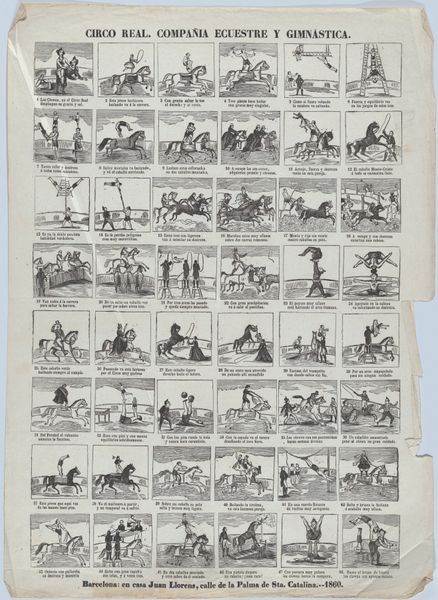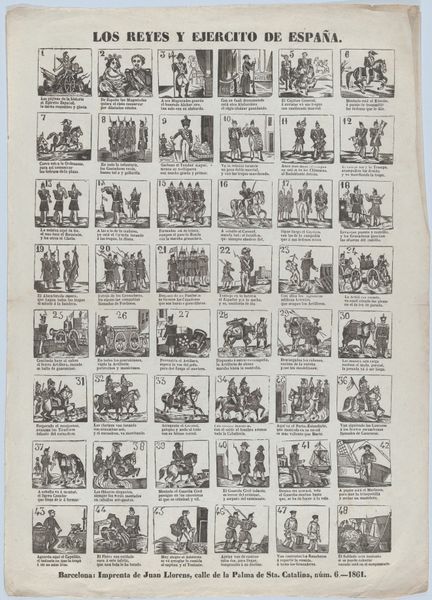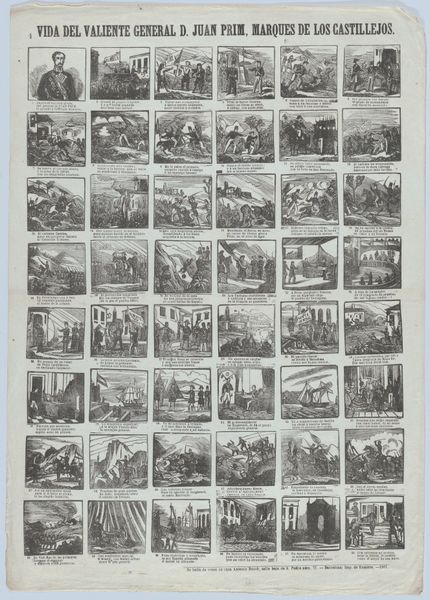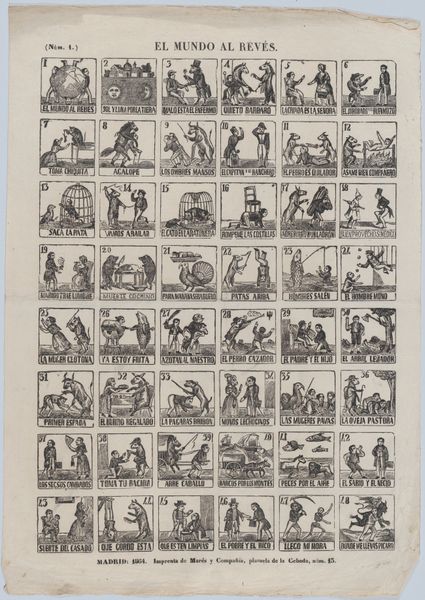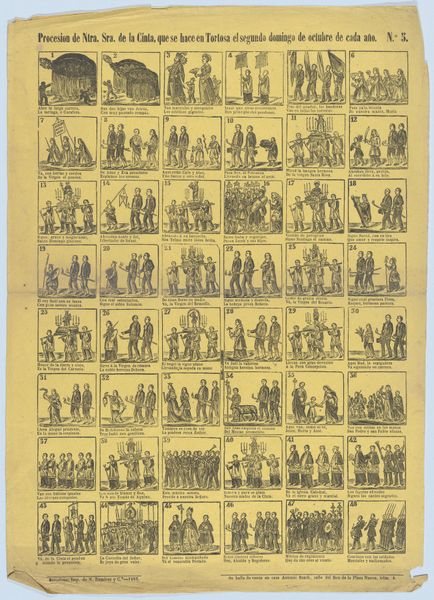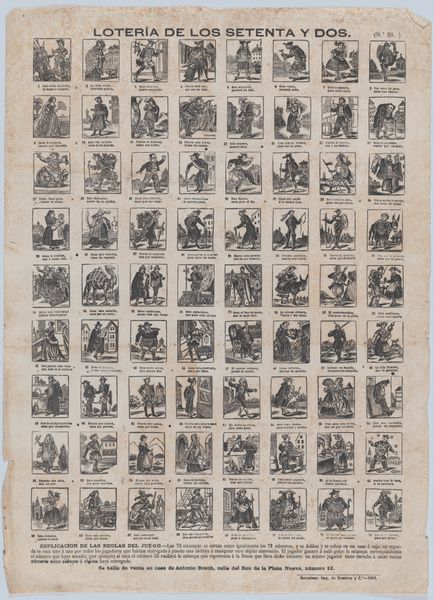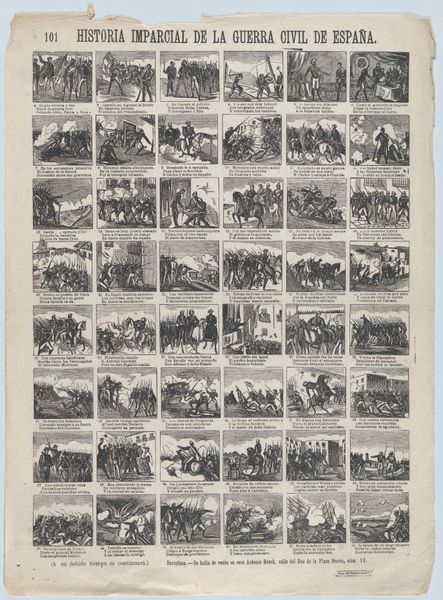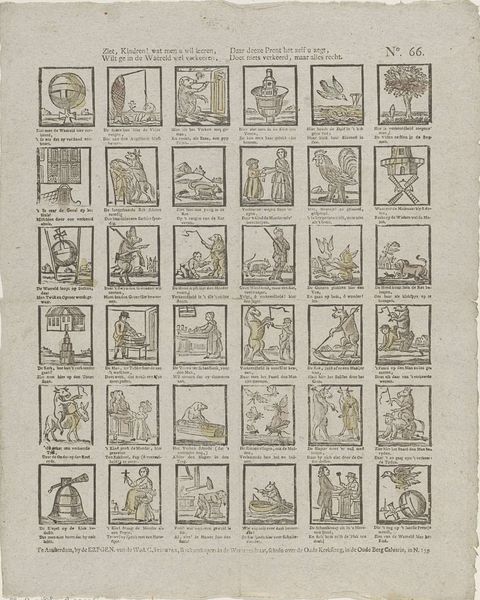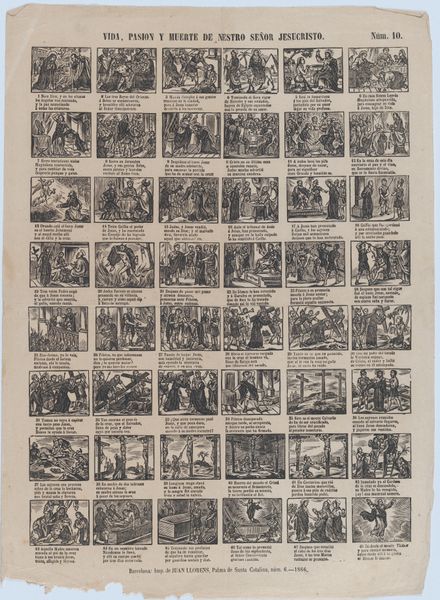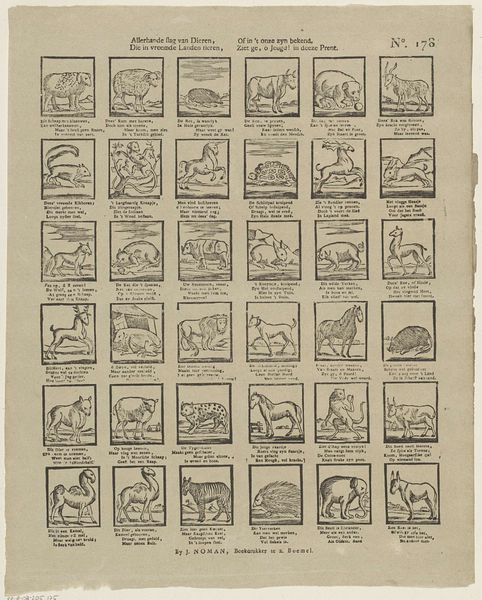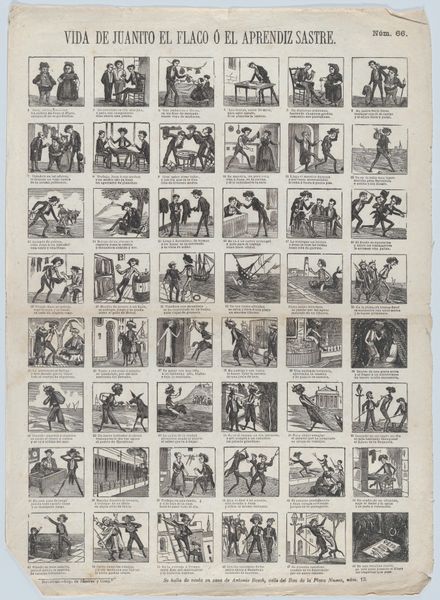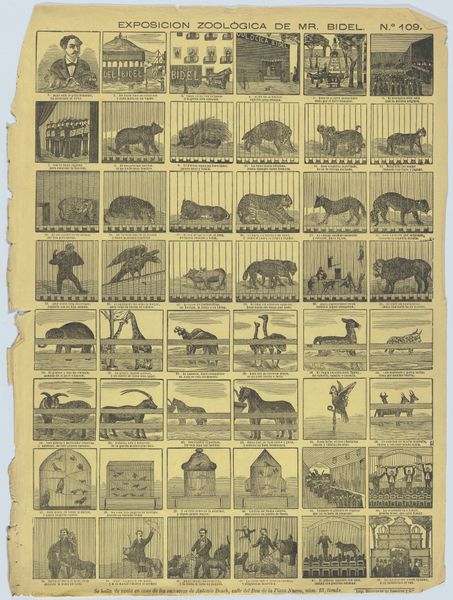
Broadside with 48 scenes of quadrupeds (animals) 1855 - 1875
0:00
0:00
drawing, graphic-art, lithograph, print
#
drawing
#
graphic-art
#
lithograph
# print
#
figuration
#
realism
Dimensions: Sheet: 16 15/16 × 12 3/16 in. (43 × 31 cm)
Copyright: Public Domain
Editor: This is "Broadside with 48 scenes of quadrupeds (animals)," created by José María Marés between 1855 and 1875. It’s a lithograph print, showcasing all these different animals. I'm struck by the almost scientific approach, like a page from a textbook. What do you make of this work? Curator: As a materialist, I’m drawn to the means of production here. Lithography enabled mass production and dissemination of images like these. Consider the social context: these prints would have made knowledge about the natural world accessible to a wider audience than ever before. It bridges the gap between high art and practical information. How does that inform your perception of its "textbook" quality? Editor: That's interesting. So it wasn't necessarily trying to be high art, but more about distribution of information using this technique of lithography? It does look different knowing it was meant to be widespread. Did the accessibility affect the technique in some way? Curator: Exactly. The technique, while capable of fine detail, would also be driven by considerations of cost and speed. Think about the division of labor: an artist creates the image, but printers, publishers, and vendors all contribute to its ultimate availability and consumption. That informs its value, right? Editor: Right, so its value is determined by its consumption by ordinary people, rather than what wealthy patrons might think about the image itself. It's less about individual artistic expression and more about… widespread information? Curator: Precisely. By looking at the materials and processes involved, we uncover how cultural knowledge was produced, distributed, and consumed. The print’s purpose wasn't purely aesthetic; it was intertwined with education, commerce, and social mobility. It really redefines our appreciation of this image, don't you think? Editor: Absolutely! I initially saw it as a simple depiction of animals, but now I see it as a product of its time, reflecting the changing relationship between art, industry, and the public. Thanks for sharing that insight.
Comments
No comments
Be the first to comment and join the conversation on the ultimate creative platform.

